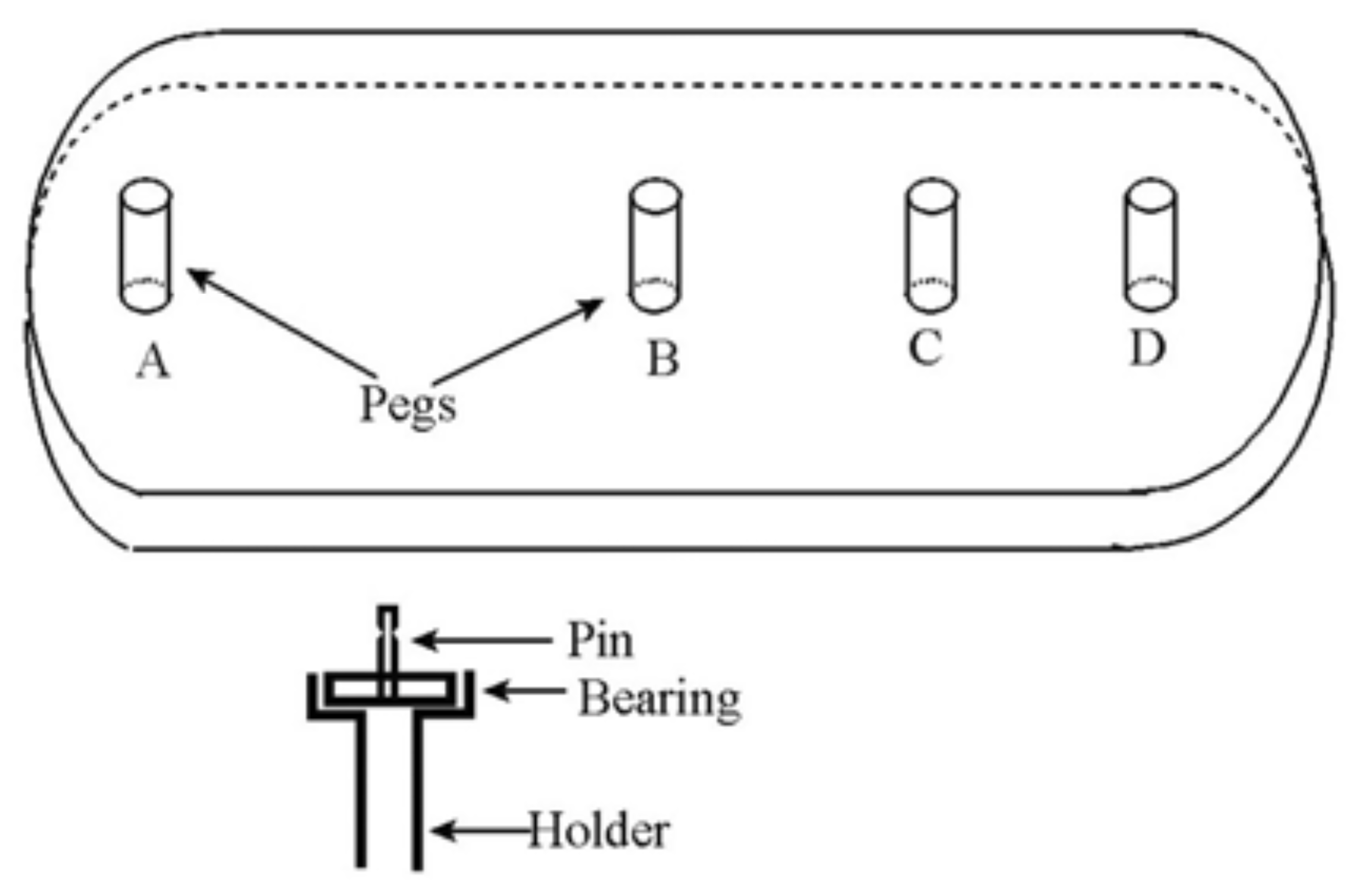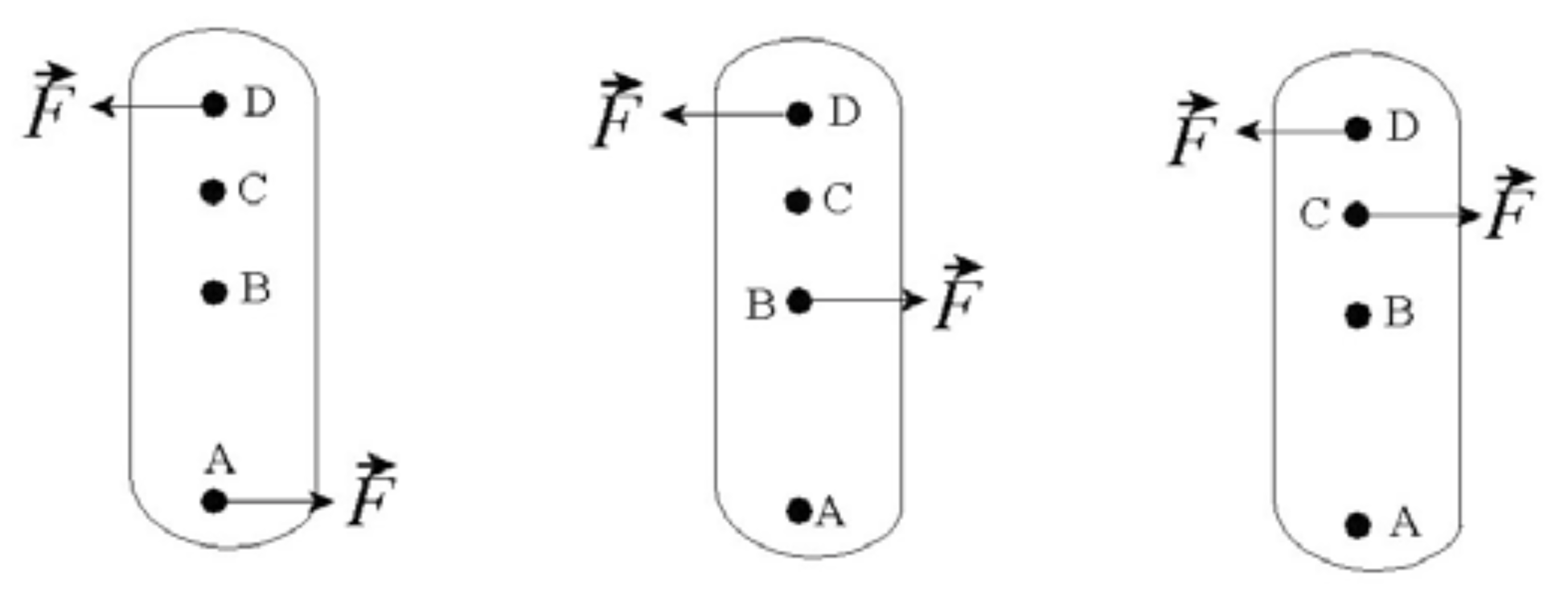Motion of the Centre of Mass 2
April 01, 2004 Filed in:
Demo CornerPatrick Whippey, Department of Physics & Astronomy, The University of Western Ontario
Do we really believe Newton’s Laws? This demonstration was born many years ago when a perceptive student challenged the assertion that a body free to move always rotates about its centre of mass. This demonstration requires an air table.
 Figure 1: Plastic base with four pins.
Figure 1: Plastic base with four pins.
Figure 1 shows a piece of plastic 15 cm long, 10 cm wide and 0.9 cm thick. It has four pegs attached, each 1.0 cm high and 0.6 cm in diameter. There are also two holders 2.0 cm high and 1.2 cm in diameter. These are a snug fit over the pins, so that the holders can be put over any of the four pins A, B, C and D. The holder has a small bearing in the top, with a pin in the middle, so that the pin can rotate with a minimum of friction. The pin has a small notch in it so that a loop of string can be put over it. You may find it useful to get help from your machine shop to make the holder. The other end of the string hangs over a pulley, not shown, with a 20 gram mass attached. Thus each string exerts a force of magnitude F = 0.2 N on the system.
 Figure 2: It rotates about where?
Figure 2: It rotates about where?
The piece of plastic is placed on the air table, and forces are applied as shown in Figure 2. In each case, about which point does the object rotate?
The system always rotates about the centre of mass, regardless of which pair of pins is used for the strings.
Column Editor: Ernie McFarland, Physics Department, University of Guelph, Guelph, Ontario, N1G 2W1 Tags: Motion



